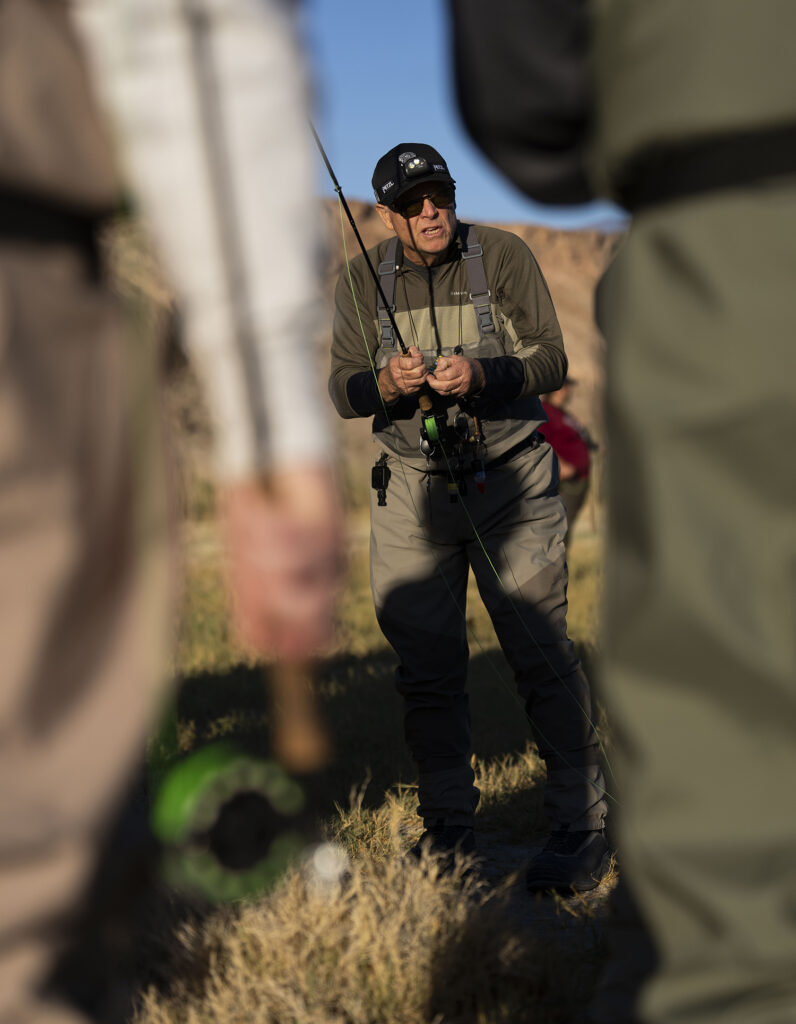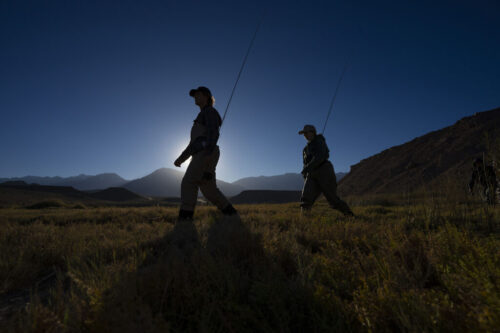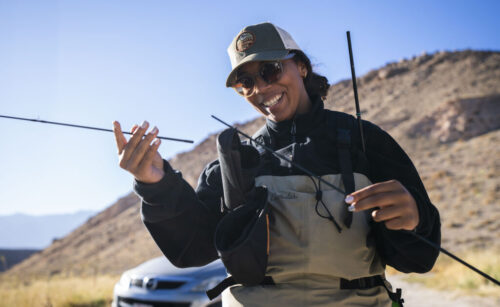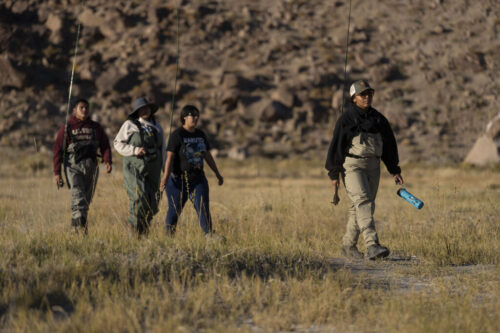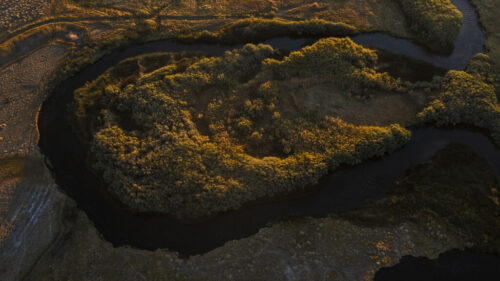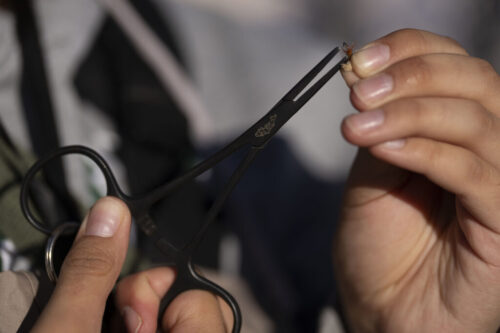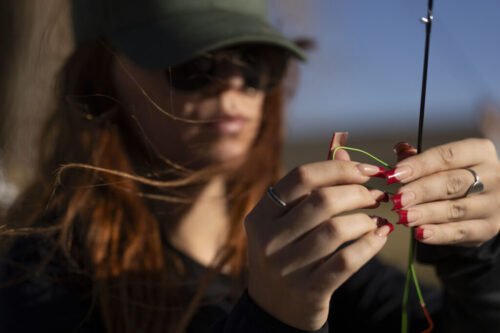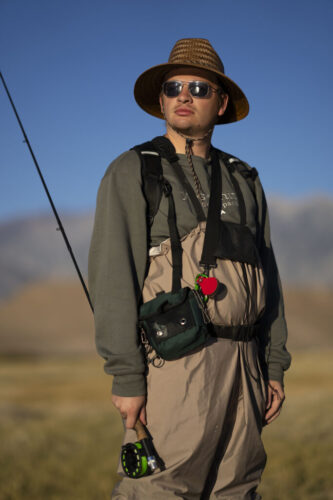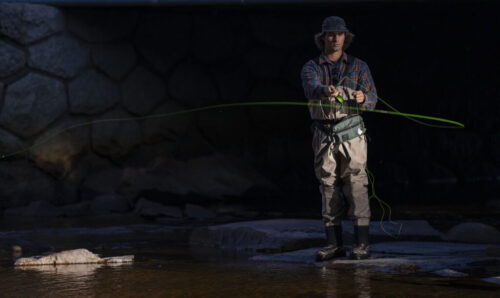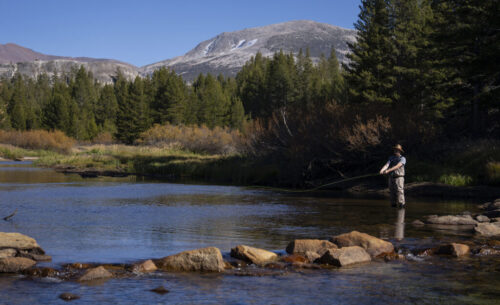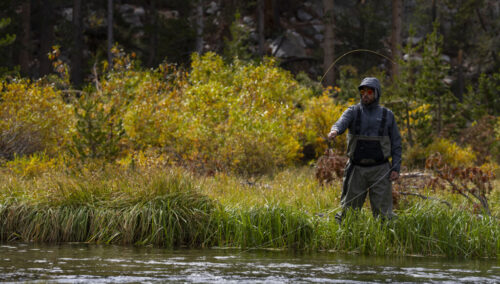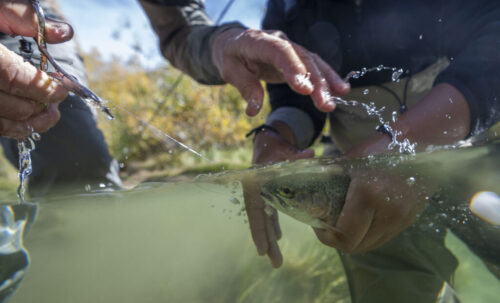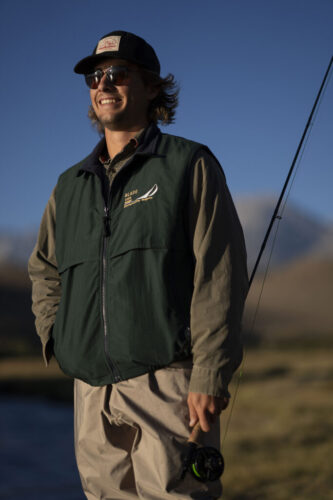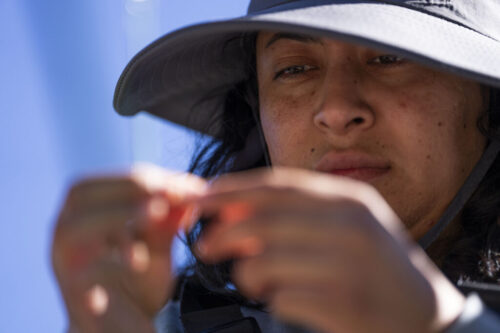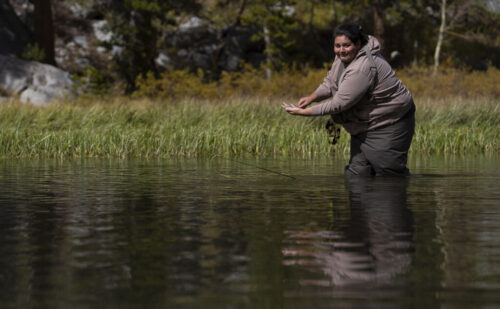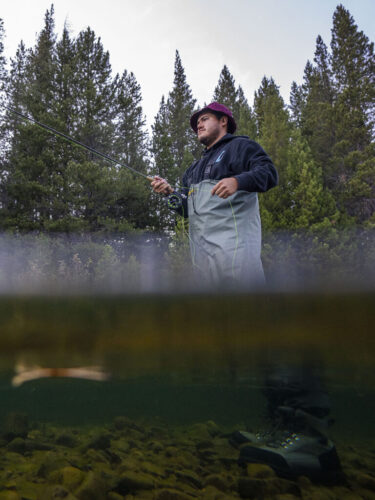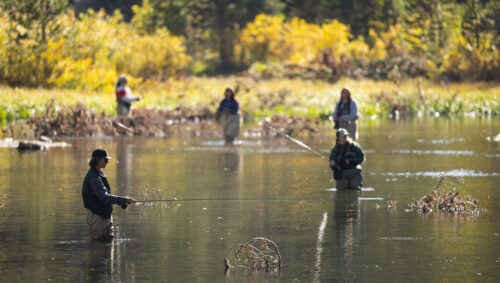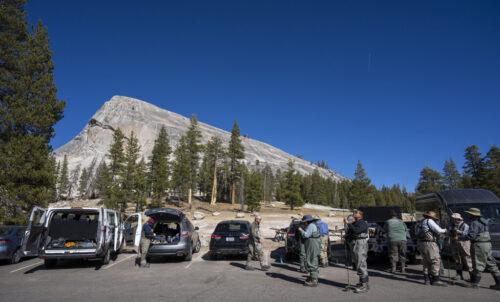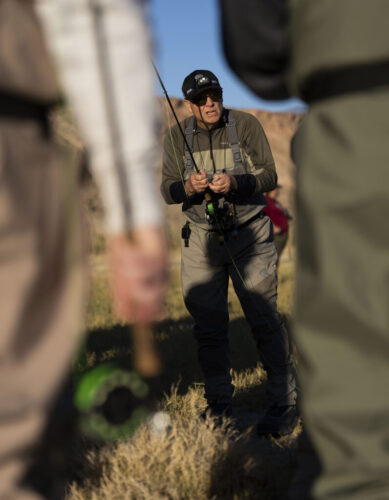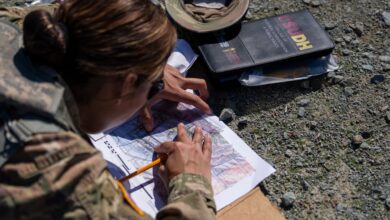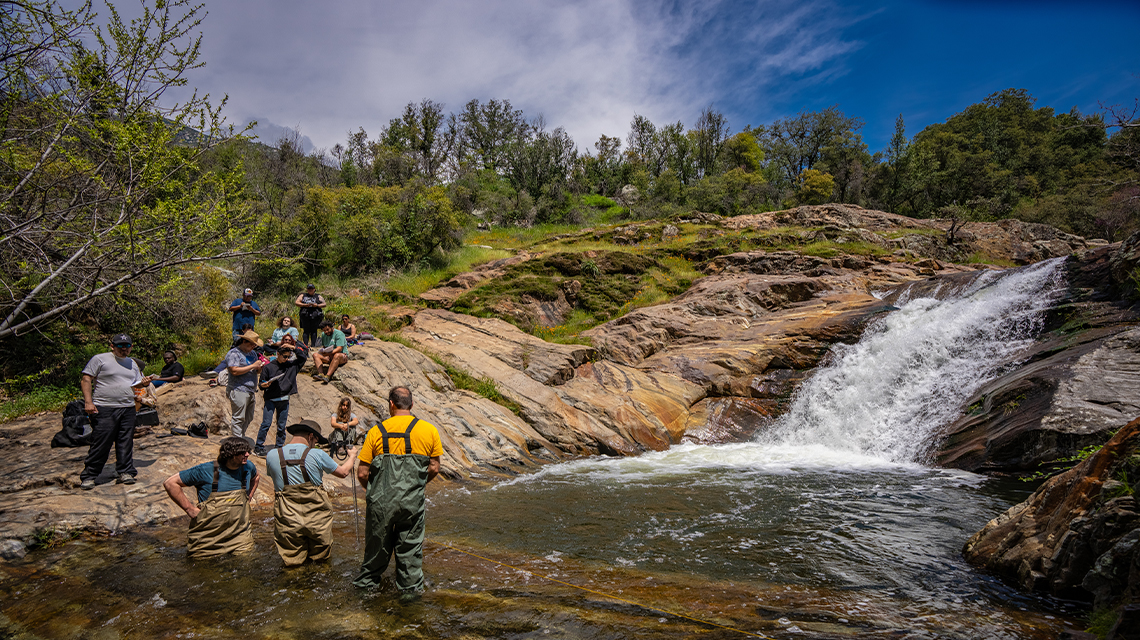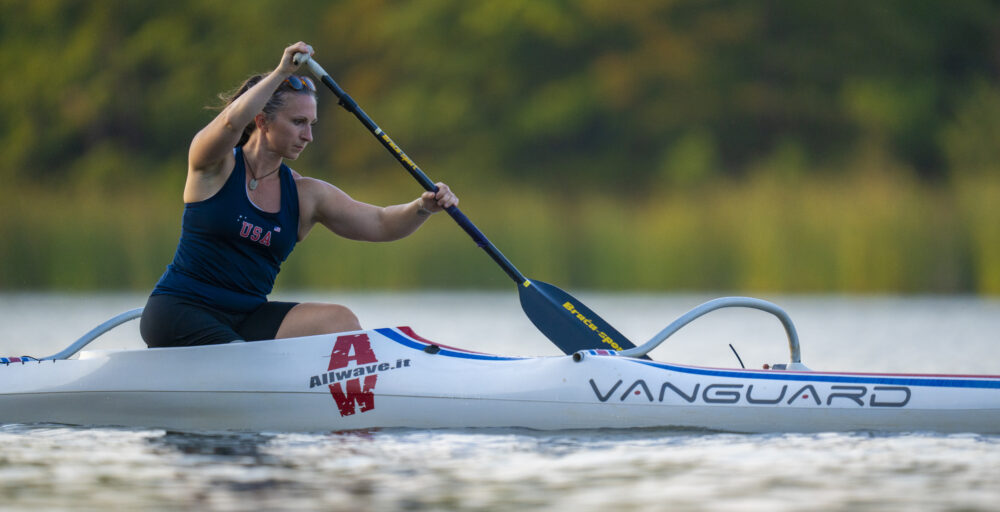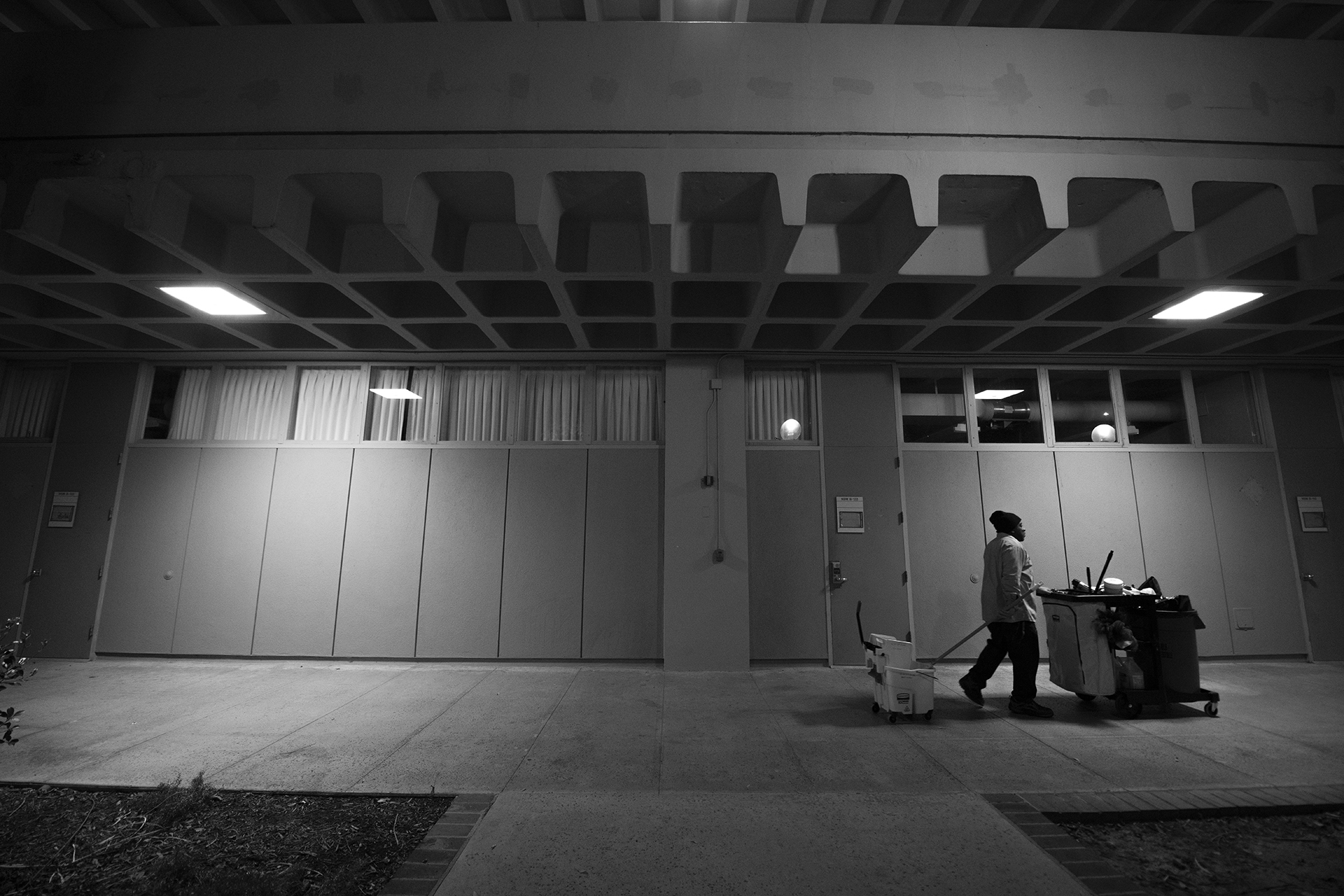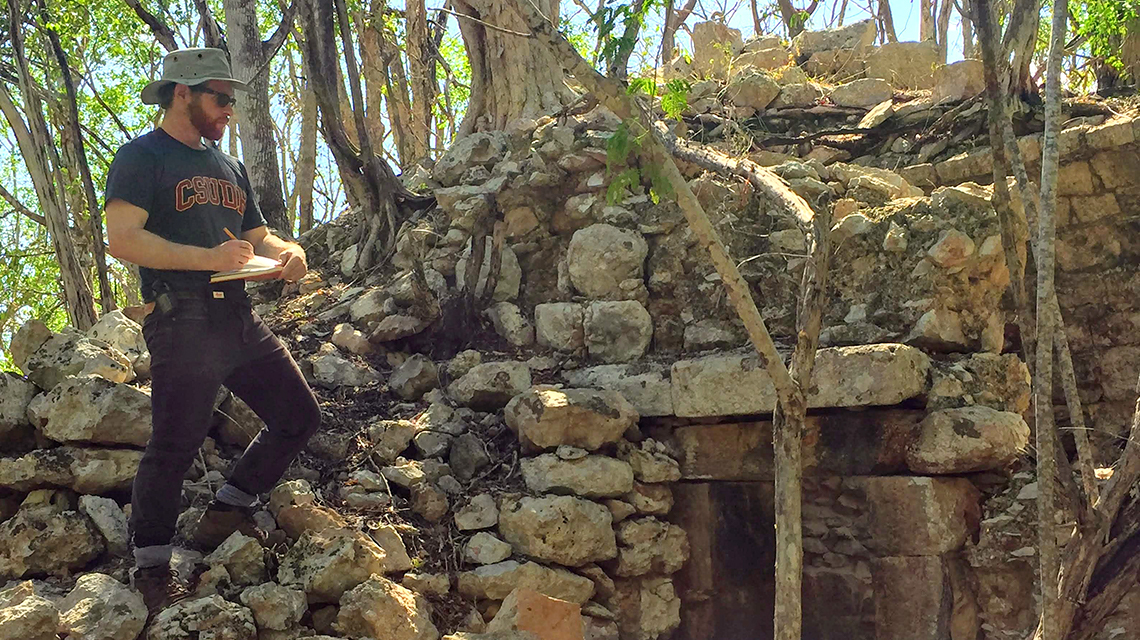History, culture, and respect for the outdoors are among the intramural course’s greatest lessons.
Darkness falls over the looming peaks of the Sierra Nevada mountains, and a group of CSUDH students huddle around a roaring campfire. It’s the middle of October, and the temperature in the Owens Valley dips sharply when the sun goes down.
George Wing smiles as the students’ laughter echoes across the campground. He’s been bringing students to Bishop, Calif., for nearly a decade, to participate in an intramural class unlike any other at the university: fly fishing.
Most of the students who sign up have no prior experience fishing or camping, and learning the skills to enjoy the outdoors is as much a focus of the class as catching fish. “It’s been life-changing for a lot of them,” says Wing, turning toward the ring of students around the campfire. “I get texts and photos from former students all the time. Now they’re going camping and fishing with their own children.”
Fishing in Urban Los Angeles
Wing arrived at CSUDH in 1988 as head coach of the baseball team, later joining the faculty of the Kinesiology Department as a lecturer in 2006, and director of Intramural Sports in 2011. Three years later, Wing and department chair Michael Ernst came up with the idea for the fly-fishing class.
The curriculum is informal but rigorous. Students learn their way around a fly rod and the necessary accessories—fly lines, leaders, tippets. They discover the subtle art of tying flies and securing them to their lines. Finally, they practice the gentle, whip-like cast that, if done correctly, drops the fly lightly on the surface of the water.
A portion of each class is set aside for students to practice their casting at the university swimming pool. “Casting is one of the hardest things for me to learn,” says Savannah Foster, a junior design major at CSUDH who is taking the class for a second time. “When you’re near a river, there are trees that can snag your line. It won’t be completely flat like the pool.”
Learning the proper uses of a back cast or a roll cast is only part of the difficulty, Foster adds. “I can never remember how to tie the various knots. I always need help. I learn the knots, and then I forget them. I’m hoping the lessons will eventually stick.”
Each semester, the class packs up their camping equipment (funded by the Associated Students, Inc. through the Instructionally Related Activities fee) and piles into a van headed north. Soon, they’ll find out if their casting technique and hand-tied flies are good enough to fool the rainbow trout populating the region’s rivers and streams, and if nights under the starry skies are everything Wing promised they’d be.
Fellowship of the Fly
It’s rarely just Wing alone with his class on these trips. Daniel Garcia completed a post-baccalaureate certification in the Clinical Lab Science program at CSUDH in 2019. He took Wing’s class twice as a student and has continued to join field trips as a mentor to new students ever since. “I picked up fly fishing pretty quickly, and maybe Coach Wing recognized my passion for it,” he said.
Then there’s Thom Glonchak, a retired firefighter who met Wing when their sons played on the same youth baseball team. They have coached together, and now they share a passion for fly fishing, which Glonchak brings to the field trips as well. “I like to figure out where the fish are hiding or holding in the stream or river,” he says. “Then you have to figure out which fly to use and what will entice them to bite.”
It was on the lower Owens River a year ago that Glonchak met Mark Williams, a transportation and logistics professional who lives in Bishop and devotes any spare time he has to fly fishing. Williams later met Wing, and since then has fished alongside students each semester when they come to Bishop.
“George and these kids really inspired me to give back what was given to me,” says Williams, who took a previous class to see ancient petroglyphs in Chidago Canyon just north of Bishop. These rock art sites were created thousands of years ago by ancestors of the Paiute-Shoshone peoples.
“There’s so much to learn out here,” says Williams. “There were people here long before me, and there’ll be people here long after I’m gone. The lessons that these opportunities give are priceless.”
